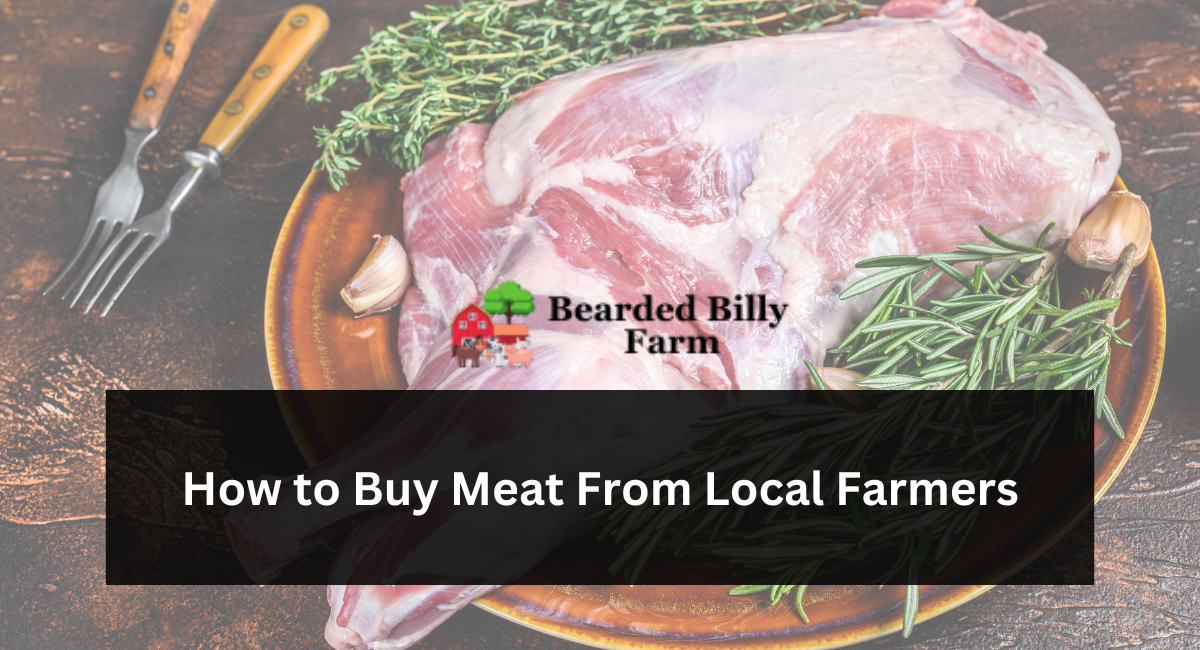Many are reconsidering where and when they purchase meat due to global supply chain problems and food safety fears. Supporting local communities while enjoying delicious, nutritious protein will allow you to both do both at the same time!
Shopping locally also gives you an opportunity to try a wider variety of cuts – not just the typical options like hamburger and steak! This can give you a chance to explore less familiar ones such as liver and tongue!
1. Look for a Farmer’s Market
If you live in a rural area, purchasing meat directly from local farmers might be easier than you realize. A number of farmers markets now specialize in providing local, high-quality meats at more reasonable prices than purchasing it from grocery stores – plus it tastes much better!
Many farmers employ farming practices that foster a healthier environment for both animals and humans, giving you food with lower carbon emissions and richer flavor profiles than you’d find at stores. Plus, most usually raise their own animals, shortening the supply chain considerably!
When searching for markets, be sure to consider both size and location when making a selection.
Look at parking availability, how the site integrates with community infrastructure, ease of setup of stalls by farmers as well as any restrictions or requirements they might need to meet in setting them up – some farms sell “cut” meat while others may provide shares in whole animals like beef, lamb or pork for you to purchase shares of.
2. Check Out the Farm’s Website
An effective farm website makes an impressive first impression. Take, for instance, Great Lakes Farm’s charming but straightforward site which features an adorable family photo on the homepage.
Accessible central information (such as when their main products will be back in stock); and additional pages which link to more info or lead funnels.
A farmer with an informative website that showcases their mission can usually be trusted to adhere to ethical standards.
The American SPCA maintains an alphabetical list of farms certified Animal Welfare Approved or Certified Humane, guaranteeing animals are raised under humane conditions with regenerative farming practices in place.
Meat Mercile was developed by a Montana rancher looking to expand the market for other regenerative meat producers; and Soil Centric offers “Buy Direct From Regenerative Farmers” list as additional online resources that connect consumers to local meat suppliers.
Furthermore, local and state extension offices may keep lists of family farm food suppliers as well.
3. Ask About Shares
Many local farmers offer meat shares, which enable consumers to buy a whole, half, or quarter animal directly from them and have them processed at either a custom-exempt or state-inspected processor before selling the meat back in bulk quantities – typically sold by the pound.
Assuring yourself of fresh, high-quality meat is easy when buying from local farms! Supporting farmers keeps four times more money in your community than shopping at chain stores.
Before purchasing a meat share, be sure to ask how much the farmer expects the animals will weigh at slaughter and butchering, then do the math on how this compares with your expectations of price per pound.
Also ensure you have enough freezer space if purchasing large portions! Otherwise ask the farm if there are local processors who specialize in handling large volumes.
4. Check Out the Farm’s Social Media
Are You Looking to Increase Online Sales as a Farm Owner/Farmer? A consistent social media presence on brand is key for driving sales online; that means an appropriate logo, post format and tone that reflect your brand character and expand its reach.
This will also build familiarity with your brand over time and expand sales online.
Instagram provides the ideal platform to showcase photos and short videos from your farm. Instagram also makes a great place to demonstrate its certifications if raising animals using humane or organic practices; not forgetting how social media allows businesses to engage with customers and promote customer service!
If you buy from a local farmer, they likely have an Instagram or Facebook page where they share what’s in season, recipes and special events – be sure to follow their page so you can support their business!
5. Talk to the Farmer
If you want to buy meat directly from farmers, the most efficient and economical method is a “share.”
A share enables buyers to purchase an animal or multiple animals at once so they can help sustain the farm – this option is great for families wanting to stock their freezer with protein-packed produce!
One advantage of purchasing directly from a farmer is being able to pose questions directly about the animals they raise and their care, such as what kind of feed is used and whether their diet includes grass only or also includes grains as supplements.
Shopping locally raised meat can be an essential step toward supporting local farms while enjoying better tasting products. By shopping local, you can both support them while enjoying superior flavors in your meal!
Just be mindful to avoid purchasing meat bearing claims like “all-natural” and “grass-fed,” as these labels can often be misleading and may not translate to what’s really meant.
Instead, find a farmer you trust who cares for their animals sustainably – this way, the food will have a positive impact on both your health, the planet, and local economies!
Conclusion
In conclusion, choosing to buy meat from local farmers is not just a transaction; it’s a commitment to supporting sustainable agriculture, fostering community connections, and making informed choices about the food we consume.
As consumers, we have the power to shape our food systems by prioritizing local, ethical, and transparent practices.
By following the steps outlined in this guide—researching local farmers, visiting markets or farms, asking questions about farming practices, and building relationships with producers—we contribute to a food culture that values quality, traceability, and the well-being of animals.


Leave a Reply